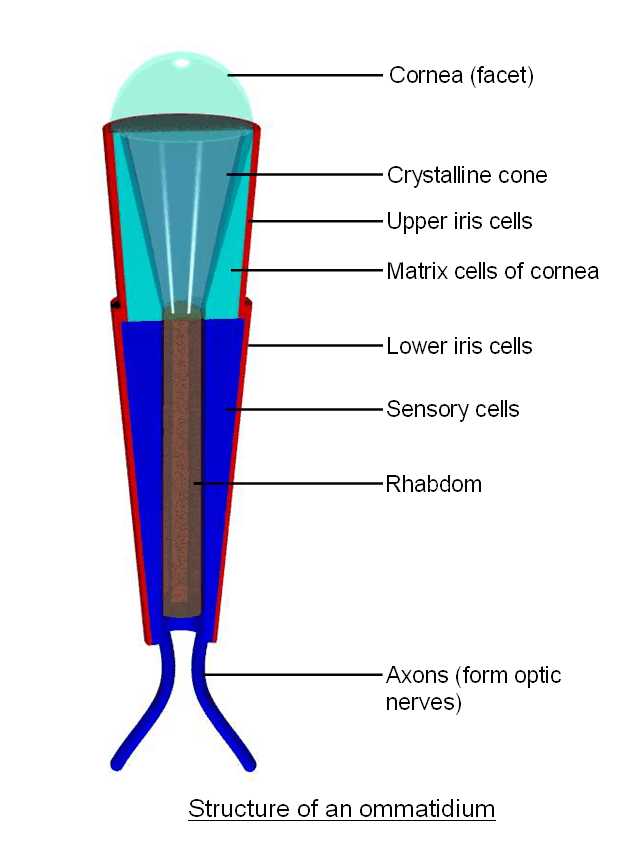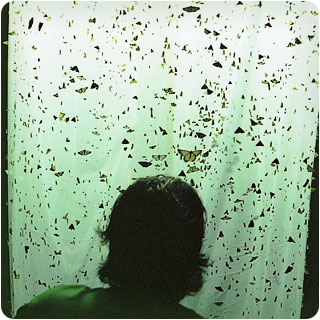
close up of a compound eye showing corneas
of approximately 450 ommatidia
http://cronodon.com/BioTech/Insect_Vision.html

basic structure of an insect ommatidium
http://cronodon.com/BioTech/Insect_Vision.html

http://www.scientificpsychic.com/workbook/chapter2.htm
